Report on P&I Condition Surveys 2019
This is a report on the condition surveys conducted in 2019 policy year (hereinafter referred to as “PY”).
Objective
In order to maintain the standards of the entered vessels, we conduct condition surveys by independent surveyors for both post and pre-entry vessels that have reached a certain age. Due to the mutuality principle of P&I insurance, whereby the premiums entrusted to us by Members shall be used to compensate for loss or damage in the event of an accident, it is necessary to ensure that each Member has and is maintaining a certain standard of ships quality and management.o assess the vessel's potential risks, which could lead to P&I claims, the condition surveys questionnaire includes not only the physical condition of the vessel but also the standard of operating manuals and the ship safety management system.
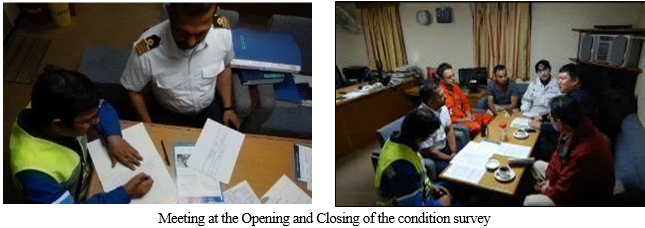
118 vessels surveyed in 2019PY
In 2019PY, we conducted condition surveys on a total of 118 vessels.
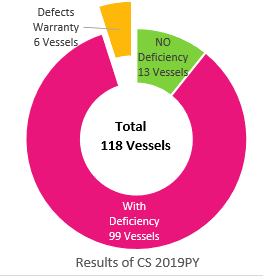
For 2020PY, we aim to carry out condition surveys for all nominated vessels.
In each case our Members’ kind understanding and cooperation is, of course, highly appreciated.
Serious Deficiency
Whenever there is a defect pointed out, we ask for immediate and permanent repair to be conducted in order to prevent accidents. Furthermore, we may issue a “Defects Warranty” which warns that there is a possibility of "coverage restriction". The “Defects Warranty” will be issued for deficiencies that are likely to lead to a serious accident.
Some of the defects warranties issued are as follows.
|
General cargo, dry-bulk or wood-chip carrier vessels
|
|
Other vessels (common defects)
|
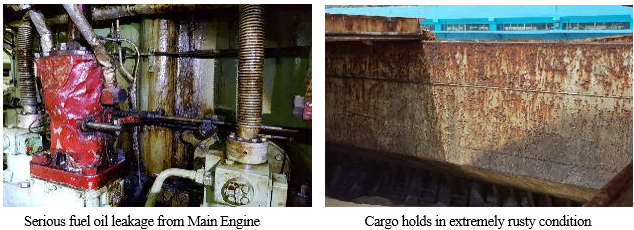
Defect Trends
The most common defects are associated with (i) hatch covers and (ii) machinery and equipment in the engine room. These trends have been unchanged since 2017PY. The below Graph shows the number of defects found during the condition surveys in the last 3 years.
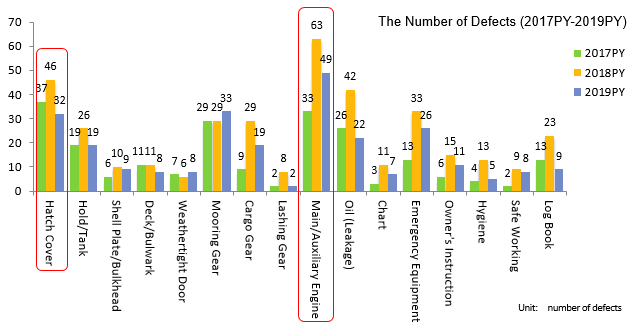
Condition Surveys Questionnaire
Under the condition surveys, we also reviewed the "passage plan" which was the focus of attention in the court judgement on a container ship aground accident that occurred in Chinese waters in 2011.
Below are some examples of what was pointed out.
|
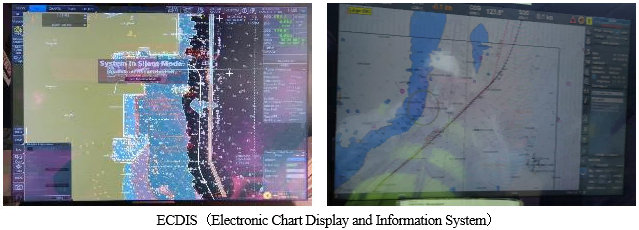
The preparation and observance of a proper "passage plan" leads to the prevention of aground accidents, which was a factor in the amendment of the Act on Liability for Oil Pollution Damage in Japan. As such, the condition surveys could be considered as the best opportunity to periodically review as to whether or not a vessel’s management system is following the latest guidelines regarding defects.
Summary
Near-miss reports from vessels reveal risk factors that could lead to accidents and incidents. They show what corrective actions and safety measures should be taken. However, in our opinion, it is also essential to confirm the actual vessel operations objectively, in order to protect the vessels and crews, which are important assets of our Members’. With condition surveys, we can not only visualize the areas where on-site maintenance has not been completed, but by comprehensively managing the corrective action reports, we can help maintain and improve the quality of our Members’ vessels.
If you have any items of concern regarding past claims and would like to confirm them during a condition survey, please contact a person in charge of the underwriting department. We appreciate your cooperation in conducting the condition surveys for 2020PY.
For further information, please click here.




